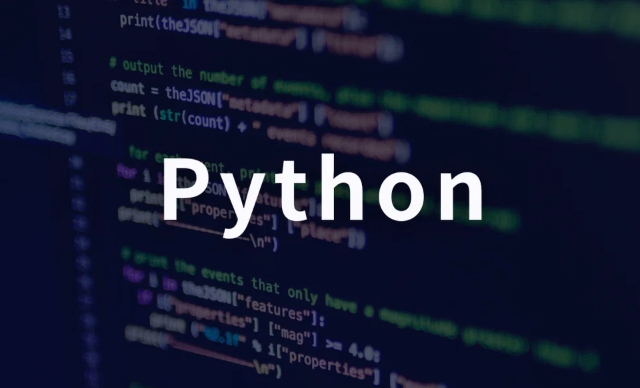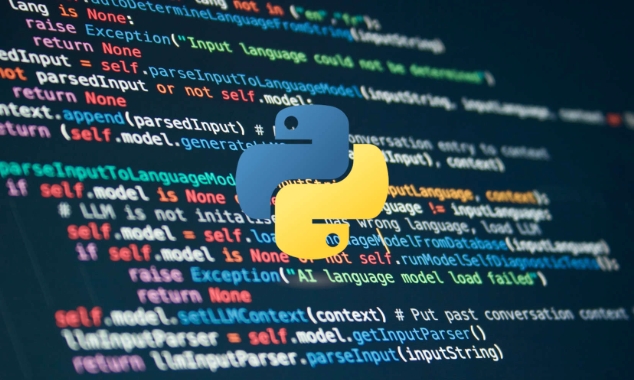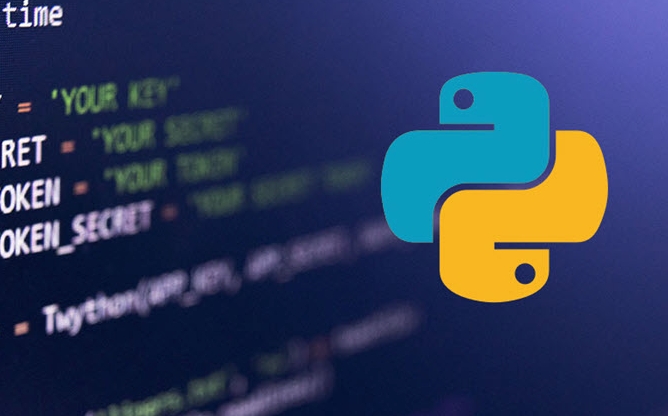To create an interactive map, you need to prepare geographic data, process it in Python and convert it to GeoJSON, and display it through the Leaflet.js front-end. Specific steps: 1. Data preparation: Use pandas to read data, ensure that it contains latitude and longitude or administrative region information, and use geopy to complete when coordinates are missing; 2. Back-end processing: Use Python to generate GeoJSON structure and use Flask interface or static files for front-end call; 3. Front-end display: Use Leaflet to initialize maps, load basemaps and GeoJSON data, and set styles according to numerical values; 4. Notes: Solve the cross-domain problem of CORS, use aggregate markers or simplify precision and optimize performance when large data volumes.

Interactive maps are now used more and more, such as displaying data distribution, path navigation, or event hotspots. If you know how to use Python and front-end basics, it is actually not difficult to make. Here we mainly talk about how to combine Python and Leaflet.js to solve this problem.

Data preparation: Geographic information must be appropriate
If you want to draw a map, you must first have data. Python is very good at this step, and it is convenient for pandas to read CSV or Excel files. The key is that the data must contain geographical location information, such as latitude and longitude coordinates, or administrative region names, so that they can be marked on the map later.
For example, suppose you want to show sales in cities across the country, your data should at least include the city name, longitude, latitude and corresponding data values. If the original data has only city names and no coordinates, you can use a library like geopy to "check out" the latitude and longitude.

Common tools:
- pandas: organize data
- geopy: Complete geographic coordinates
- GeoPandas (optional): Processing structured data with geographic information
Back-end processing: Use Python to convert data into available formats for web pages
Leaflet.js is a front-end map library. It does not process data sources by itself, so you need to export the data processed by Python into JSON or GeoJSON format for web page loading.

You can use Flask to set up a small service to allow the browser to get data directly through the interface. You can also simply and roughly store the data into a .geojson file and then directly reference the web page. The key to this step is to ensure that the format of the output is consistent with the structure that the Leaflet can recognize.
For example, a simple GeoJSON point data structure is probably like this:
{
"type": "FeatureCollection",
"features": [
{
"type": "Feature",
"geometry": {
"type": "Point",
"coordinates": [116.4, 39.9]
},
"properties": {
"name": "Beijing",
"value": 12345
}
}
]
} It is not difficult to generate this structure in Python. Just use dictionary to spell it out and use json.dump() to output it.
Front-end display: Leaflet.js loads maps and data
Leaflet is very fast to get started. The basic process is: create a map container → set the initial view (center point and zoom level) → add a base map (such as OpenStreetMap) → load data and display it.
For example, the code for initializing the map looks like this:
var map = L.map('map').setView([39.9, 116.4], 5);
L.tileLayer('https://{s}.tile.openstreetmap.org/{z}/{x}/{y}.png', {
Attribution: '? OpenStreetMap'
}).addTo(map);Next is to load the GeoJSON data generated just now:
fetch('/data/mydata.geojson')
.then(res => res.json())
.then(data => {
L.geoJSON(data).addTo(map);
});If you want each point to have different colors or icons according to the size of the value, you can add a style function. There are many ready-made examples available on the Internet to refer to.
Tips: Don't forget cross-domain and performance issues
If you are using the backend interface to provide data, remember to set CORS, otherwise the browser may report an error. For Flask, you can install a flask-cors plug-in and solve it with one line of code.
In addition, if the data volume is particularly large (such as tens of thousands of points), direct rendering will be stuttered. At this time, you can consider aggregation marks (MarkerCluster) or simplify data accuracy to improve performance.
Basically that's it. The whole process seems to have a lot of steps, but each step is not too complicated. The key is that the front and back end data formats are in line with each other, and the map can run.
The above is the detailed content of Building Interactive Maps with Python and Leaflet.js. For more information, please follow other related articles on the PHP Chinese website!

Hot AI Tools

Undress AI Tool
Undress images for free

Undresser.AI Undress
AI-powered app for creating realistic nude photos

AI Clothes Remover
Online AI tool for removing clothes from photos.

Clothoff.io
AI clothes remover

Video Face Swap
Swap faces in any video effortlessly with our completely free AI face swap tool!

Hot Article

Hot Tools

Notepad++7.3.1
Easy-to-use and free code editor

SublimeText3 Chinese version
Chinese version, very easy to use

Zend Studio 13.0.1
Powerful PHP integrated development environment

Dreamweaver CS6
Visual web development tools

SublimeText3 Mac version
God-level code editing software (SublimeText3)

Hot Topics
 Polymorphism in python classes
Jul 05, 2025 am 02:58 AM
Polymorphism in python classes
Jul 05, 2025 am 02:58 AM
Polymorphism is a core concept in Python object-oriented programming, referring to "one interface, multiple implementations", allowing for unified processing of different types of objects. 1. Polymorphism is implemented through method rewriting. Subclasses can redefine parent class methods. For example, the spoke() method of Animal class has different implementations in Dog and Cat subclasses. 2. The practical uses of polymorphism include simplifying the code structure and enhancing scalability, such as calling the draw() method uniformly in the graphical drawing program, or handling the common behavior of different characters in game development. 3. Python implementation polymorphism needs to satisfy: the parent class defines a method, and the child class overrides the method, but does not require inheritance of the same parent class. As long as the object implements the same method, this is called the "duck type". 4. Things to note include the maintenance
 Python Function Arguments and Parameters
Jul 04, 2025 am 03:26 AM
Python Function Arguments and Parameters
Jul 04, 2025 am 03:26 AM
Parameters are placeholders when defining a function, while arguments are specific values ??passed in when calling. 1. Position parameters need to be passed in order, and incorrect order will lead to errors in the result; 2. Keyword parameters are specified by parameter names, which can change the order and improve readability; 3. Default parameter values ??are assigned when defined to avoid duplicate code, but variable objects should be avoided as default values; 4. args and *kwargs can handle uncertain number of parameters and are suitable for general interfaces or decorators, but should be used with caution to maintain readability.
 Explain Python generators and iterators.
Jul 05, 2025 am 02:55 AM
Explain Python generators and iterators.
Jul 05, 2025 am 02:55 AM
Iterators are objects that implement __iter__() and __next__() methods. The generator is a simplified version of iterators, which automatically implement these methods through the yield keyword. 1. The iterator returns an element every time he calls next() and throws a StopIteration exception when there are no more elements. 2. The generator uses function definition to generate data on demand, saving memory and supporting infinite sequences. 3. Use iterators when processing existing sets, use a generator when dynamically generating big data or lazy evaluation, such as loading line by line when reading large files. Note: Iterable objects such as lists are not iterators. They need to be recreated after the iterator reaches its end, and the generator can only traverse it once.
 Python `@classmethod` decorator explained
Jul 04, 2025 am 03:26 AM
Python `@classmethod` decorator explained
Jul 04, 2025 am 03:26 AM
A class method is a method defined in Python through the @classmethod decorator. Its first parameter is the class itself (cls), which is used to access or modify the class state. It can be called through a class or instance, which affects the entire class rather than a specific instance; for example, in the Person class, the show_count() method counts the number of objects created; when defining a class method, you need to use the @classmethod decorator and name the first parameter cls, such as the change_var(new_value) method to modify class variables; the class method is different from the instance method (self parameter) and static method (no automatic parameters), and is suitable for factory methods, alternative constructors, and management of class variables. Common uses include:
 How to handle API authentication in Python
Jul 13, 2025 am 02:22 AM
How to handle API authentication in Python
Jul 13, 2025 am 02:22 AM
The key to dealing with API authentication is to understand and use the authentication method correctly. 1. APIKey is the simplest authentication method, usually placed in the request header or URL parameters; 2. BasicAuth uses username and password for Base64 encoding transmission, which is suitable for internal systems; 3. OAuth2 needs to obtain the token first through client_id and client_secret, and then bring the BearerToken in the request header; 4. In order to deal with the token expiration, the token management class can be encapsulated and automatically refreshed the token; in short, selecting the appropriate method according to the document and safely storing the key information is the key.
 What are Python magic methods or dunder methods?
Jul 04, 2025 am 03:20 AM
What are Python magic methods or dunder methods?
Jul 04, 2025 am 03:20 AM
Python's magicmethods (or dunder methods) are special methods used to define the behavior of objects, which start and end with a double underscore. 1. They enable objects to respond to built-in operations, such as addition, comparison, string representation, etc.; 2. Common use cases include object initialization and representation (__init__, __repr__, __str__), arithmetic operations (__add__, __sub__, __mul__) and comparison operations (__eq__, ___lt__); 3. When using it, make sure that their behavior meets expectations. For example, __repr__ should return expressions of refactorable objects, and arithmetic methods should return new instances; 4. Overuse or confusing things should be avoided.
 How does Python memory management work?
Jul 04, 2025 am 03:26 AM
How does Python memory management work?
Jul 04, 2025 am 03:26 AM
Pythonmanagesmemoryautomaticallyusingreferencecountingandagarbagecollector.Referencecountingtrackshowmanyvariablesrefertoanobject,andwhenthecountreacheszero,thememoryisfreed.However,itcannothandlecircularreferences,wheretwoobjectsrefertoeachotherbuta
 Python `@property` decorator
Jul 04, 2025 am 03:28 AM
Python `@property` decorator
Jul 04, 2025 am 03:28 AM
@property is a decorator in Python used to masquerade methods as properties, allowing logical judgments or dynamic calculation of values ??when accessing properties. 1. It defines the getter method through the @property decorator, so that the outside calls the method like accessing attributes; 2. It can control the assignment behavior with .setter, such as the validity of the check value, if the .setter is not defined, it is read-only attribute; 3. It is suitable for scenes such as property assignment verification, dynamic generation of attribute values, and hiding internal implementation details; 4. When using it, please note that the attribute name is different from the private variable name to avoid dead loops, and is suitable for lightweight operations; 5. In the example, the Circle class restricts radius non-negative, and the Person class dynamically generates full_name attribute






